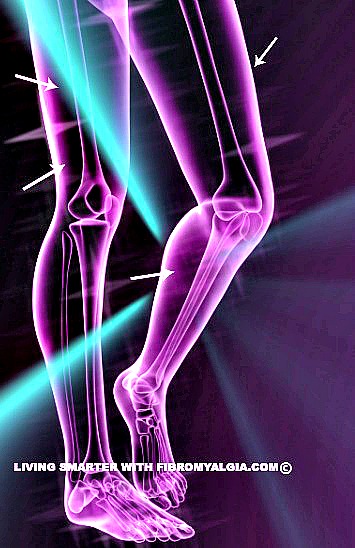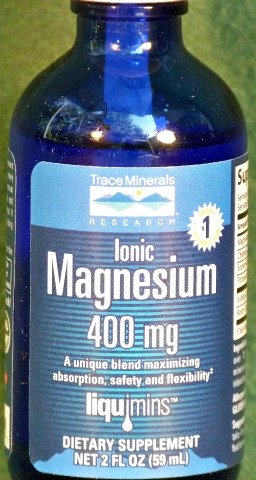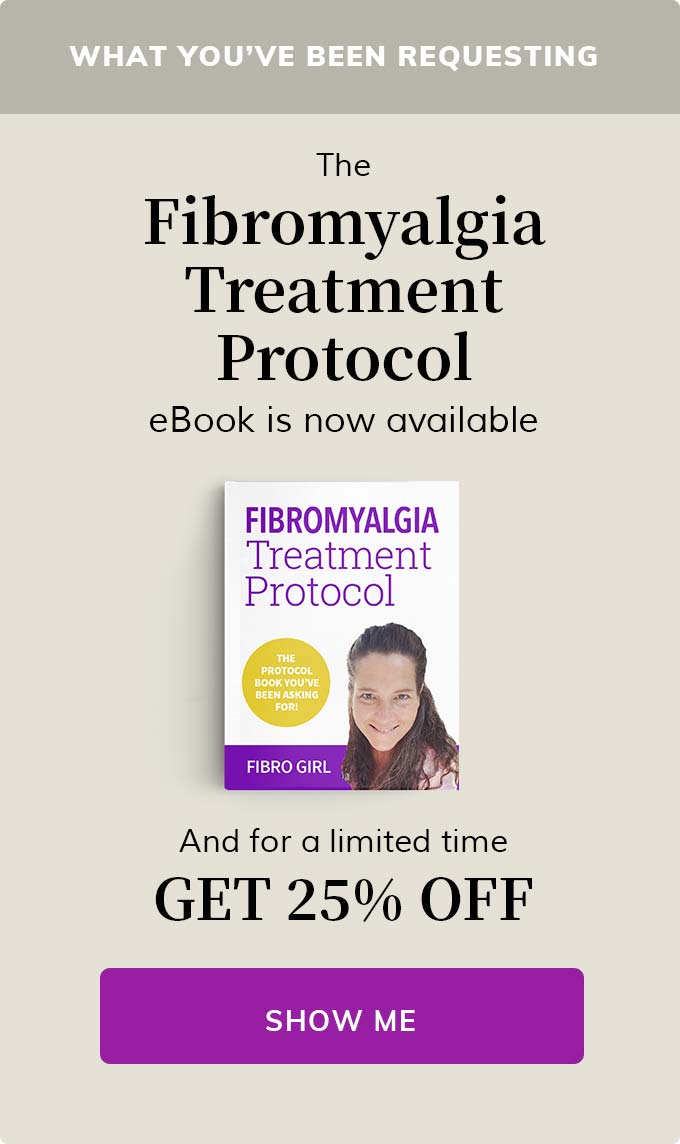Fibromyalgia Chronic
Muscle Pain

If
you have been living with fibromyalgia, you may experience chronic muscle pain on a regular basis.
Although this is just one of many symptoms within fibromyalgia, it can be
relentless.
This pain can occur due to layers of trigger points within muscle
and connective tissue and around the tender “areas” of the fibro body.
Chronic muscle pain in fibromyalgia is
pretty much “equal opportunity” meaning that it can affect every part of the
body, from the vulnerable area around the shoulders, upper back and arms to the
lower body including glutes, lower back and legs.
Another
issue with chronic muscle pain is the weakness that can and often does
accompany the pain.
This is the result of “inactive” trigger points that cause
no pain at the moment but do cause weakness in the host muscle.
This is what
causes your shoulder to freeze or your hips to feel as if they have locked up
on you.
The “weakness” is a result of either these dormant trigger points or the
eventual non-use resulting from a lack of “activation” within the muscle. It is
very difficult to work or activate muscles in the body that have active or
inactive trigger points in or around them.
If
you go to physical therapy for example and the exercises seem to cause more
pain, this could be due to active trigger points.
The goal is to be able to
distinguish where trigger points may be causing chronic muscle pain and
resulting weakness.
It may be necessary to get with a therapist trained in manual trigger point therapy or Myotherapy to help release these areas while working to decrease
overall pain levels and bring more body awareness as well.
The mind creates "motor programs" all the time, so we want to support the mind and body through proper movements that it will adhere to more automatically.
In the
“Fibromyalgia Symptoms” article, we refer to what we call “the groove”.
This is
what many people with fibromyalgia experience when they find themselves
consistently avoiding more activities of daily living and/or greater exertion.
The problem is that when we continually avoid using our major and minor muscle
groups, they begin to weaken and atrophy.
Many people with fibromyalgia chronic muscle pain find themselves in a “catch 22” of sorts when every
activity or seemingly simple task leads to increased pain around muscles,
joints, tendons and ligaments.
So what does chronic muscle pain feel like?
Although it
can vary from person to person, when fibromyalgia chronic muscle pain is present, it
can affect not just the muscle, but the surrounding areas of tissue, tendon and
joint as well.
People with fibromyalgia, often say that the pain actually
“feels like” it is in the bone, not always the muscle. When the areas around
the upper body are “flaring” this can be musculo-skeletal pain at it’s worst.
It can then be hard to distinguish exactly where the pain is coming from, but
you can bet that the weakness and pain in the muscle is likely to affect
surrounding areas.
Burning, stabbing, and radiating in between muscles and
joints, tendons and ligaments. The muscles often feel “knotted” and are painful
and radiating upon touch.
Sometimes radiating pain from a nerve or muscle can feel like it is in the bone
and surrounding joint area.
For instance, the bone in the upper arm (known as
the humerus) is often a place where trigger points can radiate from the neck,
shoulder and clavicle area.
Do you ever reach up to a kitchen cabinet for
plates or a glass, and when you do, notice a shot from nowhere around your
“humerus” in the upper arm?
Yes, and it’s not too humorous now is it? No, it’s
not funny because it can leave the fibro person wondering what is going on? Why is it that just reaching my arm up could
cause such a radiating pain?
Well, that is the combination of trigger points
and myofascial pain and when in combination with fibromyalgia, can exhibit
itself in any area of the body, but especially the more vulnerable parts
related to “tender areas” of the fibro body.
The Medical Training “Gap”
 Chronic Muscle Pain (in blue)
Chronic Muscle Pain (in blue)How is it that chronic muscle pain has become so pervasive? Well, did you know that about 45% of our body weight is made of muscle?
And, doctors are not trained in treating muscle pain at it’s source. So let’s take you, for example, the person living with fibromyalgia.
If a treating doctor is merely throwing drugs and muscle relaxants at you, it becomes very difficult to address the fascia pain and the trigger points that are either “at rest” or active at any given time.
Because fibromyalgia affects multiple systems, the fibro body is also now dealing with the side effects of medication, or maybe multiple ones, and its effects on the delicate endocrine and immune systems.
And, unlike the familiar muscle pain of working out or pushing a muscle through the applications of strength training, this kind of muscle pain is ongoing and therefore referred to as chronic. It is not always related to any incident, injury or over compensation.
That is what I like to call the difference between a “hurt so good” kind of pain and a “hurts all the time” kind of pain that not only feels unproductive but is detrimental when left to become chronic and debilitating.
A hurt so good pain is what happens when we test our muscles and work to build muscle strength.
A detrimental pain is often from overuse, repetition, multiple trigger points, tightness and lack of regeneration in the body (non -restorative sleep).
I believe
one of the reasons that people with fibromyalgia often feel as if they are
progressively getting worse is due to this very complex issue with chronic
muscle pain, myofascial pain and the many symptoms within the various systems
including both the nervous and endocrine systems of the body.
It is therefore
essential that we use the most effective approach to fibromyalgia.
We may not be able to get rid of all pain and symptoms, but if we
want to have more good days than bad now, and independence in our later years,
despite living with fibromyalgia and all of its complexity, we have to be more
proactive.
It’s bad enough for a healthy person to let muscle atrophy and
weaken, but for a fibro person, this can lead to debilitation and a greater
propensity to loss of independence.
Whether you are newly diagnosed or
living with fibromyalgia for a near lifetime like many of us, it is important
to focus on the solutions for a better quality of life.
Solutions For Muscle Pain
There can be some barriers to finding a solution that works for many fibro people:
If you are
under the care of a doctor that is unfamiliar with fibromyalgia, you are likely
on a prescription drug regimine.
The
drug will help initially, but then lose some of its effectiveness. Many fibro victims think their fibro is
getting worse and ask for and get a higher dosage.
This cycle goes on unless your doctor
realizes the medication is losing its effectiveness and changes to another one.
Then, the whole cycle begins anew.
Many
of the drugs prescribed for fibromyalgia have serious side-effects, and it
becomes very difficult to separate those from the numerous symptoms of
fibromyalgia. This vastly complicates your doctor’s plan to treat you.
Scientists have learned that even the powerful drug morphine, as we all know, initially helps to control serious pain, but you may not know that eventually, it turns on the body and actually contributes to the pain.
I’m not
saying that you should not take the prescription medicines for fibro. But, you know that there’s no “silver
bullet” out there right now. These
medications come with their own set of issues and complications, especially
over the long term.
We know there is a better way, but again, it's never all or nothing with fibro.
Another exasperating issue in fibromyalgia is the variability of not only the symptoms between individuals with fibro, but also their response to solutions.
Scientists
conducting studies and clinical trials are thrilled if a third of participants
experience a positive outcome. Then, of course the question that arises is,
“just how positive was the outcome?”.
Today, there’s no quantitative way to measure the degree of positive
outcome.
There’s a standard set of
questions that are asked of the participants, the answers to which are
qualitative at best. However, using the tools they have, Drs. conducting clinical trials using both a real medication and a "fake" medication (placebo) have determined that there is only a 10% absolute improvement in pain using the FDA approved fibromyalgia medications.
Since I don’t
tolerate drugs very well, they have not been an option for me. So I have always focused on non-drug methods to control my fibromyalgia chronic muscle pain.
I have developed quite a “tool set” for
chronic muscle pain that has worked for me even though I suffer with severe
fibromyalgia and its primary co-conditions.
What To Do?
Basically,
it’s a “trial and error” process, but it’s not without guidance.
Some of us in the field are continually
updating our published advice.
But I will tell you that much of our content here is evergreen, meaning what was relevant 15 years ago, is relevant today.
That pertains to this website and my
facebook pages, Living Smarter with Fibromyalgia AND Fibro Fit People. And, I have used all of our suggested
treatments I’ve included here in the website.
In the case of suggested supplements, I have
checked out various brands for their history of quality and their degree of
involvement in ongoing research into fibromyalgia.
One very important characteristic I look for
is the bio-availability of the ingredients. It varies widely from brand to
brand.
In several cases the supplement I
recommend is five-times more effective at the same dose level as other
well-known brands. This then becomes
both an effectiveness and an affordability issue.
I am not saying that I recommend only these brands; however, the ones I recommend are of good quality, and I’ve used the product myself and with clients ongoing. Also, I will be with you as you traverse this website always trying to offer insight as to how you should go about prioritizing with supplementation, because more is not better.
Steps You Can Take To
Relieve
Chronic
Muscle Pain Of Fibromyalgia
First, before I get to suggestions, I hope you will continue to follow on the my two Facebook pages. I often talk about this and many other topics related to fibromyalgia.
Remember that trigger points, which are common in fibromyalgia (but different than tender areas) often occur in and around muscle tissue. Because this is a rather thorough article, I will put the trigger points article at the bottom of this article.
Trigger points in muscle make it hard for the muscle to function properly, and hard to activate muscle. This is why you feel like you are losing muscle strength.
You can follow me on Fibro Fit People. I work with all ages, I am 55, living with Fibromyalgia and its primary co-conditions since a young age. I get it, and this is why I am so passionate about this cause.
Although we use a non medication approach here for the most part, I am going to give you a study below.
- A recent trial study found that the supplement acetyl L-carnitine successfully improved pain and depression about as well as duloxetine (Cymbalta), a prescription drug often used for fibro. The duloxetine, however, also improved psychological symptoms. The dosage of acetyl L-carnitine used was 1500 mg/day.
(NOTE:You should always talk to your doctor about any supplement and its dosage before taking it.)
- Researchers at Wake Forest Medical
College found that light to moderate exercise did not increase the fibromyalgia
pain for a group of fibro patients; however, their overall fibro symptoms,
including pain, improved.
- Just published in April, 2015, Spanish researchers found that higher physical fitness is consistently associated with lower fibromyalgia severity in women with FMS.
- Checkout the "Benefits of Exercise" article to learn that a double blind clinical trial found that 12-weeks of moderate strength training led to a 35 to 49% improvement in the pain of fibromyalgia among a large group of fibro women.
And, only 9% of participants in the study had to drop out.
My Treatment Recommendations:
- Try a lower carbohydrate diet to reduce glucose levels (See Fibro Diet) and many links there.
- Use mind body techniques such as deep breathing, visualization, and meditation to calm your inner self. (See Mind Body & Coping) no intense stretching or long sessions. We use alternatives specific to fibromyalgia.
- Practice stress reduction techniques that we ascribe to in this website.
- Walking and light exercise including both strength and low impact aerobics (start slow). I include many suggestions for exercise throughout the website and on my facebook page, Fibro Fit People. When I say "start slow", I also mean to "fire" your concept of exercise and start working with me on better adaption to daily activities first.
- Think positive. "Fire" your “Negative Nelly” as I said I did on my Mind Body Connection page. No more “why me?”. That also means avoid focusing on “symptoms talk” except with your doctor, and do focus on anything positive, no matter how small. Because of the way we’re “wired”, anything we focus on consistently, grows bigger.
- Both passive and active physical therapy:
- Heat/Ice Packs (great for circulation)
- OSKA PEMF technology (check our home page for discount)
- massage
- chiropractic
- Rolfing (more intensive)
- Myofascial Release (foamroller)
- Bowen Therapy
- Trigger Point Therapy
- Acupressure Therapy (see the Be-Active brace below)
The "BeActive" Brace For Low Back Pain
- The patented pressure pad in the brace applies targeted pressure to the specifc point that provides back pain relief! BeActive is now FDA approved for Class 1 Medical Devices!
- Helps relieve lower back pain associated with Sciatica!
- Quick and easy to apply . The Beactive wrap should initially be worn for up to 2 hours at a time. If it remains comfortable, the wrap can be worn for longer periods as needed.
- Works on either right or left leg! The Beactive wrap fits the calf circumference sizes 12.5 inches to 18 inches measured around the fullest part of the calf. The Beactive wrap is effective when worn on a single leg on the side of the pain.
- Discreet and easily hidden under clothing.
Follow on my Facebook Fitness page, Fibro Fit People. Living with FMS/CFS/ME and MCS for almost four decades now and a Nationally Certified Trainer specializing in fibro and holistic fitness, I do get it. It is more than fitness; it's also adapting to daily activities of living, injury prevention and more.
- Try supplementing with magnesium and malic acid.
Read or bookmark our magnesium article - Also, read the CoQ 10 Supplement article
- Malic acid and Magnesium work synergistically to address cellular energy deficits, reduce muscle and tendon pain and in the metabolizing of carbohydrates.
For optimal benefit when taking both malic acid and magnesium, they are best taken with the B-complex family of vitamins, particularly B-6 (Refer to my supplement page for the best multi-vitamin and B-Complex with NO additives) - L-Glutamine (amino acid) is also an essential to nourishing muscle while helping to relieve the pain and burning we often feel within muscles. It is an essential in healing leaky gut issues as well.
I address this amino acid throughout the site and on the Leaky Gut article. I recommend using the powder over capsules. Between 2-4 grams per day is helpful. Always check with your doctor or naturopath for your individual dosing and needs. - acetyl L-carnitine for your chronic muscle pain is another option. Carnitine helps to provide cellular energy which in turn helps those aching and burning muscles in fibromyalgia and chronic pain.
Thanks for reading here today, For more support and guidance, join our email list below, and consider our course members group.
Direct Message me on the facebook page for more information. <3 Lisa.
Before you leave, my sitemap can provide you with a "God's-eye" view of this website laid out in "outline format".
Stay connected by joining our unique Email here at Fibro Repair Email
Related articles:
Fibromyalgia Trigger Points
Fibromyalgia Myofascial Release
HOME > Fibro Symptoms > Top of Page
Didn't find what you were looking for? Search for it:
living-smarter-with-fibromyalgia.com
©2013-2024 All Rights Reserved
FibroFitPeople, LLC ;©2024 All Rights Reserved











